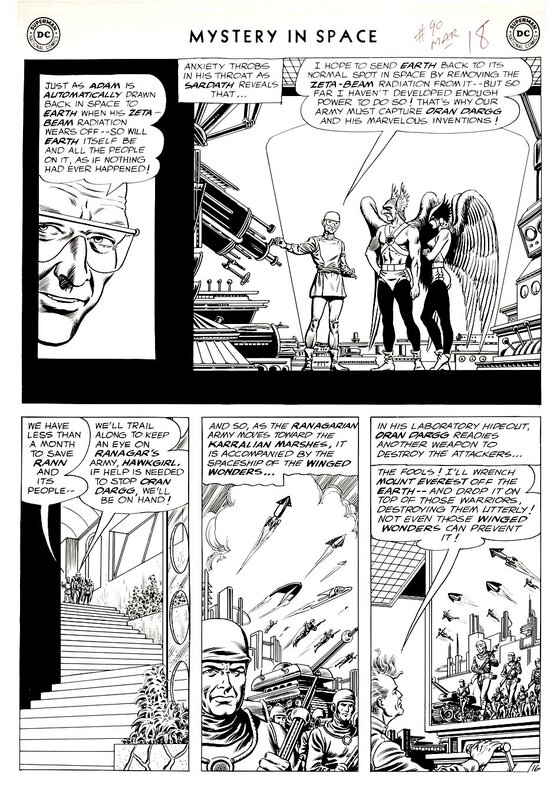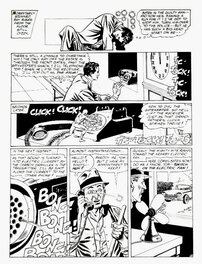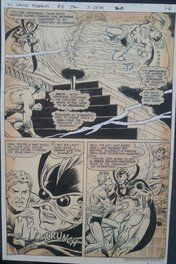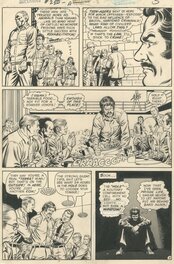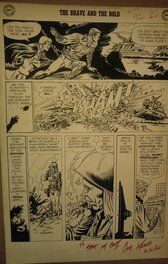In Simpleton 's collection
Description
Avec Murphy Anderson, quelle que soit la gravité de la situation, on est certains de se retrouver dans une ambiance calme et sereine, parfois aux antipodes de l'histoire... Ainsi, Hawkman et Hawgirl, en visite sur Rann et, Adam Strange étant absent, sont informés par Sardath, le scientifique en chef, du plan machiavélique et potentiellement très destructeur du savant fou du moment (le dit savant fou n'étant identifiable que grâce à sa coiffure échevelée et à ses monologues bien déjantés, comme il se doit). Mais, même ainsi, pas d'urgence (il reste moins d'un mois pour régler le problème) ni de critique acerbe (Sardath parle du savant fou et de ses "merveilleuses inventions"). Nous sommes entre gens de bonne compagnie !
Pas de stress, il y a Murphy Anderson (et Gardner Fox au scénario, tout de même).
Bon, j'ai l'air critique, comme ça, mais, bien sûr, j'adore !
Pas de stress, il y a Murphy Anderson (et Gardner Fox au scénario, tout de même).
Bon, j'ai l'air critique, comme ça, mais, bien sûr, j'adore !
To leave a comment on that piece, please log in
About Murphy Anderson
Murphy Anderson was born in 1926 in Asheville, North Carolina. He was influenced by Will Eisner, Lou Fine, and Alex Raymond. Anderson's only training came from the Art Students League. He broke into comic books in 1944 at the Fiction House group, penciling and inking the strips 'Suicide Smith' (1944), 'Sky Rangers' (1946), and 'Star Pirate' (1944-1947). It was there that he received his only writing assignment, handling a minor Fiction House feature entitled 'Life on Other Worlds'.
In 1947 Anderson took over the long-running 'Buck Rogers' comic from Dick Calkins. In 1949 Anderson left 'Buck Rogers', but in 1958 and 1959 he returned for another stint on Sunday episodes of the strip. During the 1950s, after his first go-round on 'Buck Rogers', he returned to comic books and drew for a number of houses, including Pines, Marvel, St. John, Ziff-Davis, and finally National. He joined penciller and later publisher Carmine Infantino on two comics of note, 'Adam Strange' and 'Batman'.
Between 1960 and 1964, he drew the 'Atomic Knights' for National, and between 1963 and 1967, Anderson worked on 'Hawkman'. After Carmine Infantino was promoted in 1966, Anderson inked Gil Kane's work in 'Green Lantern' and 'Atom', and eventually teamed up with penciller Curt Swan to revamp another famous icon of the comics, 'Superman'.
Text (c) Lambiek

